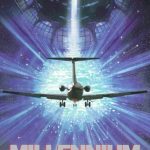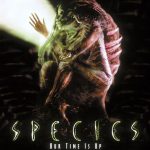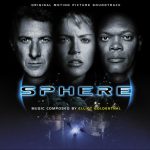Sleepy Hollow (1999)

Sleepy Hollow (1999), directed by Tim Burton, is a gothic horror film loosely based on Washington Irving’s classic short story The Legend of Sleepy Hollow. It stars Johnny Depp as Ichabod Crane, a New York City constable sent to the village of Sleepy Hollow to investigate a series of mysterious murders believed to be caused by the ghost of the legendary Headless Horseman. Combining Burton’s signature dark, fantastical visual style with horror and mystery, Sleepy Hollow offers a rich, atmospheric experience that is both eerie and oddly whimsical.
Suggested videos for you:
Plot Overview
The story is set in 1799, when New York constable Ichabod Crane is dispatched to Sleepy Hollow, a small, isolated village plagued by a series of gruesome decapitations. The townspeople believe that the murders are the work of a spectral entity, the Headless Horseman, a Hessian mercenary who lost his head to an American soldier during the Revolutionary War and has since returned from the grave to exact vengeance.
Ichabod, a man of science and reason, initially dismisses these claims, determined to uncover a logical explanation for the killings. However, as he delves deeper into the mystery, he encounters strange and terrifying phenomena that challenge his rational beliefs. The more Ichabod learns about the Horseman, the more he realizes that there may be supernatural forces at play, especially as the killings continue, seemingly tied to a dark conspiracy involving the town’s most prominent families.
As the story unfolds, Ichabod develops a relationship with Katrina Van Tassel (Christina Ricci), the daughter of one of the village’s wealthiest men, who holds the key to the town’s secrets. The film builds to a thrilling climax in which Ichabod confronts the Horseman and uncovers the dark, hidden truths behind the town’s curse.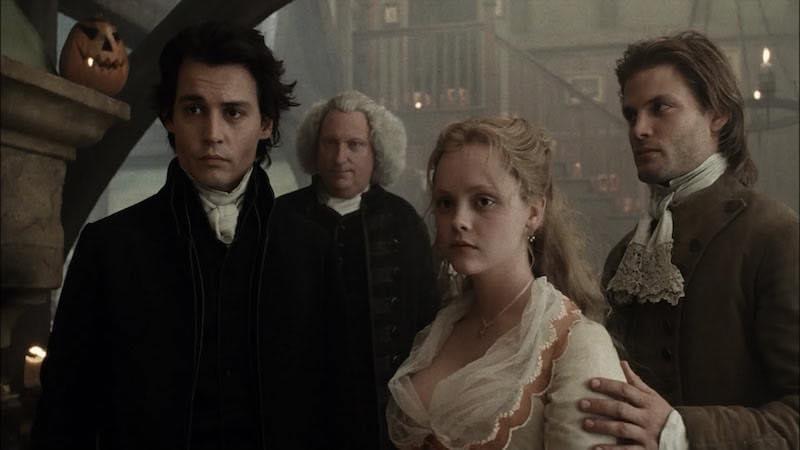
Visuals and Atmosphere
One of the most striking aspects of Sleepy Hollow is its visual design. Tim Burton is known for his unique gothic aesthetic, and here he delivers a film dripping with atmosphere. The village of Sleepy Hollow is shrouded in fog, bathed in moonlight, and filled with ominous forests and decaying buildings, creating a setting that feels like a living, breathing entity. The film’s color palette is dominated by grays, blacks, and muted tones, with splashes of vibrant red to emphasize the violence and bloodshed. The cinematography, by Emmanuel Lubezki, masterfully captures the eerie, shadowy environment, enhancing the film’s dark fairy-tale feel.
The Headless Horseman himself, portrayed by Christopher Walken (in flashback sequences with his head intact) and a stuntman for his headless scenes, is a terrifying presence. His arrival is always accompanied by a sense of dread, and the design of the Horseman—complete with a sleek black horse, a gleaming sword, and a towering, headless form—adds to the film’s nightmarish quality. The creature effects, particularly the Horseman’s decapitation scenes, are both gory and fantastical, blending practical effects with CGI in a way that feels organic and tactile.
Burton’s use of dark humor and whimsical touches also helps to balance the horror. The film does not shy away from moments of levity, especially in Ichabod’s character, whose squeamishness and awkwardness provide comic relief amidst the darker events. This blending of the macabre and the humorous is a hallmark of Burton’s style and works well in Sleepy Hollow, keeping the tone from becoming overwhelmingly bleak.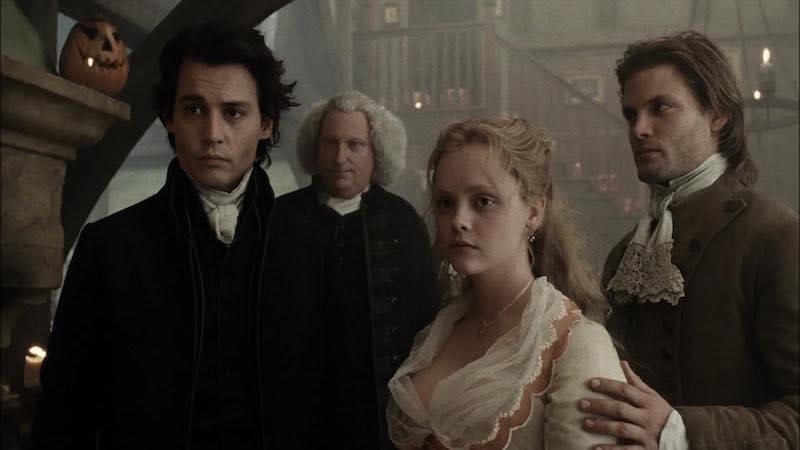
Performances
Johnny Depp delivers a memorable performance as Ichabod Crane, bringing his characteristic eccentricity to the role. In contrast to the tall, lanky, cowardly schoolteacher of Irving’s original story, Depp’s Ichabod is an educated, scientific-minded constable, yet he retains an air of nervousness and fragility. Depp plays Ichabod as a man caught between his commitment to reason and his growing fear of the supernatural, and he infuses the character with quirks, such as fainting at the sight of blood or using odd gadgets for his investigations, which add to the film’s offbeat charm.
Christina Ricci, as Katrina Van Tassel, provides the film with its romantic subplot, though her character is somewhat underdeveloped. Ricci’s ethereal beauty fits well with Burton’s gothic vision, but Katrina is often more of a symbolic presence—representing purity, love, and innocence—than a fully fleshed-out character with her own motivations. Despite this, Ricci and Depp share a warm chemistry, and their relationship adds a touch of sweetness to the film’s dark atmosphere.
The supporting cast is strong, with notable performances by Miranda Richardson as Lady Van Tassel, the seemingly innocent yet mysterious stepmother of Katrina, and Michael Gambon as Baltus Van Tassel, Katrina’s father. Richardson, in particular, shines as the film’s ultimate villain, revealing layers of manipulation and deceit as the plot unfolds. Christopher Walken, though his screen time is limited, makes a strong impression as the Hessian mercenary, with his sharp teeth, wild eyes, and almost feral presence.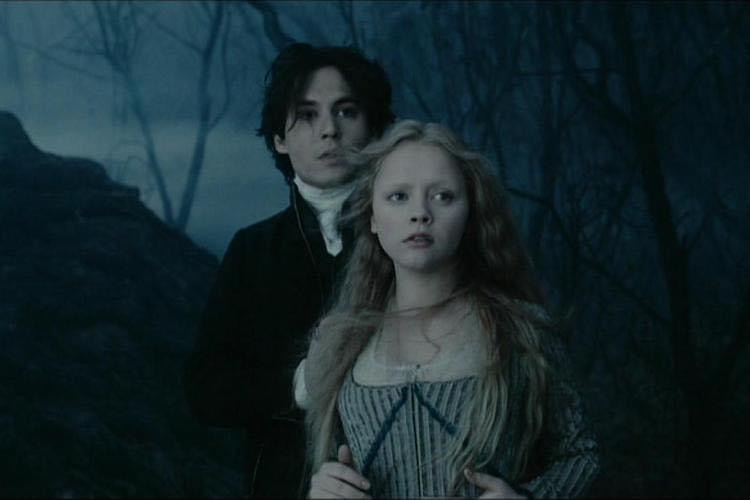
Themes and Storytelling
Sleepy Hollow explores themes of superstition versus reason, science versus the supernatural, and the corrupting power of greed. Ichabod’s journey from skepticism to belief mirrors a broader tension between enlightenment thinking and old-world folklore, a recurring theme in gothic fiction. The film suggests that both science and superstition have their limits, and that understanding the world requires a balance between the two.
The film also delves into themes of power, greed, and revenge. The murders in Sleepy Hollow are not just random acts of violence but are tied to a deeper conspiracy involving land, inheritance, and personal vendettas. This plotline adds layers of intrigue and suspense, elevating the film from a simple ghost story to a tale of human corruption and the cost of ambition.
Visual Style and Burton’s Influence
Tim Burton’s unmistakable gothic style is one of the film’s greatest strengths. He infuses Sleepy Hollow with a sense of macabre whimsy, blending horror with elements of fantasy and dark humor. Burton’s world-building is meticulous, with each set piece contributing to the film’s eerie, otherworldly atmosphere. The fog-laden forests, the creepy windmill, and the eerie village interiors all serve to create a gothic fairy tale where danger lurks in every shadow.
Danny Elfman’s musical score further enhances the film’s mood, with its haunting melodies and orchestral swells adding to the tension and mystery. The score works in tandem with the visuals to create an immersive experience that feels both timeless and otherworldly.
Criticism
While Sleepy Hollow is visually stunning and thematically rich, it isn’t without its flaws. The film’s plot, particularly the conspiracy at the heart of the murders, can feel convoluted at times, with several twists and revelations crammed into the final act. Some critics have noted that the film sacrifices narrative depth for spectacle, leaving certain characters underdeveloped—particularly Katrina, whose motivations and backstory could have been explored more fully.
Additionally, while Depp’s performance as Ichabod Crane is engaging, his character’s quirky, at times comedic, demeanor might feel out of place for some viewers in what is otherwise a serious, gothic horror film. Burton’s reliance on visual flair sometimes detracts from the film’s storytelling, as the stunning aesthetics occasionally overshadow the emotional stakes of the plot.
Conclusion
Sleepy Hollow is a visually captivating and atmospheric film that stands as one of Tim Burton’s most iconic works. Its blend of horror, mystery, and gothic fantasy creates an immersive world that feels both familiar and hauntingly strange. While the narrative can feel uneven at times, particularly in the final act, the film’s striking visuals, memorable performances, and eerie tone make it a compelling entry in the gothic horror genre. For fans of Burton’s signature style and lovers of gothic tales, Sleepy Hollow offers a darkly enchanting experience that lingers in the mind long after the credits roll.



